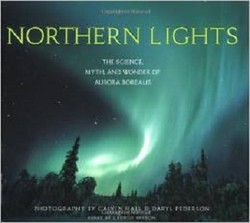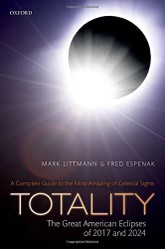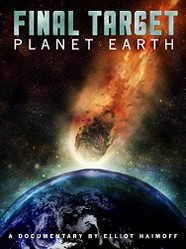The Auroras are a result of a disturbance on the sun. A solar flare, often associated with a sunspot, flings charged particles into space, and if the particles travel towards the Earth they can result in an aurora display. Often, the solar flare is not aimed at the Earth, and the particles travel by in space.
The sun has a complex multitude of magnetic poles, and because the sun has differential rotation, which means it goes around on its axis over different periods of time for different latitudes, those magnetic fields can become twisted and cause magnetic storms. Charged particles move in curved paths in magnetic fields, so the charged particles of the sun rotate into sunspots, darker areas of magnetic storms, that can also cause a solar flare. A solar flare exists when the sun erupts and throws charged particles outward. Normally, these particles will arc back to the sun, but if the explosion is great enough charged particles are flung into space.
The charged particles travel towards the Earth, and enter its magnetic field. They then move in a spiral path in response to the magnetic field, and travel in the Earth’s magnetic fields towards the magnetic poles. The Earth’s magnetic field enters the Earth at the magnetic poles, so the spiral path drops in height as the particles move towards the magnetic poles.
The stream of charged particles eventually comes into the atmosphere. They pull and push on the molecules, attracting the positive nuclei and repelling the electrons. This adds energy to the electrons. The electrons then give this extra energy way as light. The color of the light emitted depends on the molecule involved. Different gases have different amounts of energy the electron can accept in going into a higher energy state. So, different gases glow different colors. As the electrons reach deeper into the atmosphere, more gases have their electrons excited. This is caused by the changing strength of the event, and the closeness of the incoming charged particles to the magnetic poles. Some events have faster moving charged particles that can reach deep into the atmosphere, others do not.









 UAPs, Formerly UFOs, If They Are Real How Can We Explain Their Arrival to Earth?8 days ago
UAPs, Formerly UFOs, If They Are Real How Can We Explain Their Arrival to Earth?8 days ago
 Polar Coordinate System10 days ago
Polar Coordinate System10 days ago
 Aurora Can Disrupt Electrical Devices And Even the Grid?11 days ago
Aurora Can Disrupt Electrical Devices And Even the Grid?11 days ago
 Overcoming Difficulties Encountered with Mathematics12 days ago
Overcoming Difficulties Encountered with Mathematics12 days ago



Comments
blackspanielgallery, It's exciting for areas -- such as Georgia, North Carolina, Texas, and Virginia -- normally excluded from aurora borealis viewing to be able to witness these majestic displays.
Thanks for the comments.
Your explanation of the aurora lights is easy to understand and the videos are stunning!
There was a report on TV yesterday that the northern lights could be seen from much farther south than usual last night. But the area didn't include Florida. Sure wish it had, but the videos in your article were a good substitute.